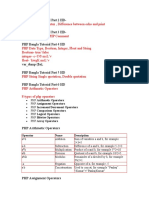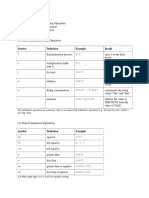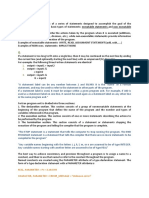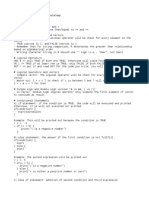0% found this document useful (0 votes)
11 views8 pagesPHP Operators1
This document provides an overview of various operators in PHP, including arithmetic, logical, comparison, conditional, assignment, array, increment/decrement, string, and spaceship operators. Each operator type is explained with its syntax and examples to illustrate their usage. The document serves as a comprehensive guide for understanding how to perform different operations in PHP programming.
Uploaded by
kmgCopyright
© © All Rights Reserved
We take content rights seriously. If you suspect this is your content, claim it here.
Available Formats
Download as DOC, PDF, TXT or read online on Scribd
0% found this document useful (0 votes)
11 views8 pagesPHP Operators1
This document provides an overview of various operators in PHP, including arithmetic, logical, comparison, conditional, assignment, array, increment/decrement, string, and spaceship operators. Each operator type is explained with its syntax and examples to illustrate their usage. The document serves as a comprehensive guide for understanding how to perform different operations in PHP programming.
Uploaded by
kmgCopyright
© © All Rights Reserved
We take content rights seriously. If you suspect this is your content, claim it here.
Available Formats
Download as DOC, PDF, TXT or read online on Scribd
/ 8
























































































